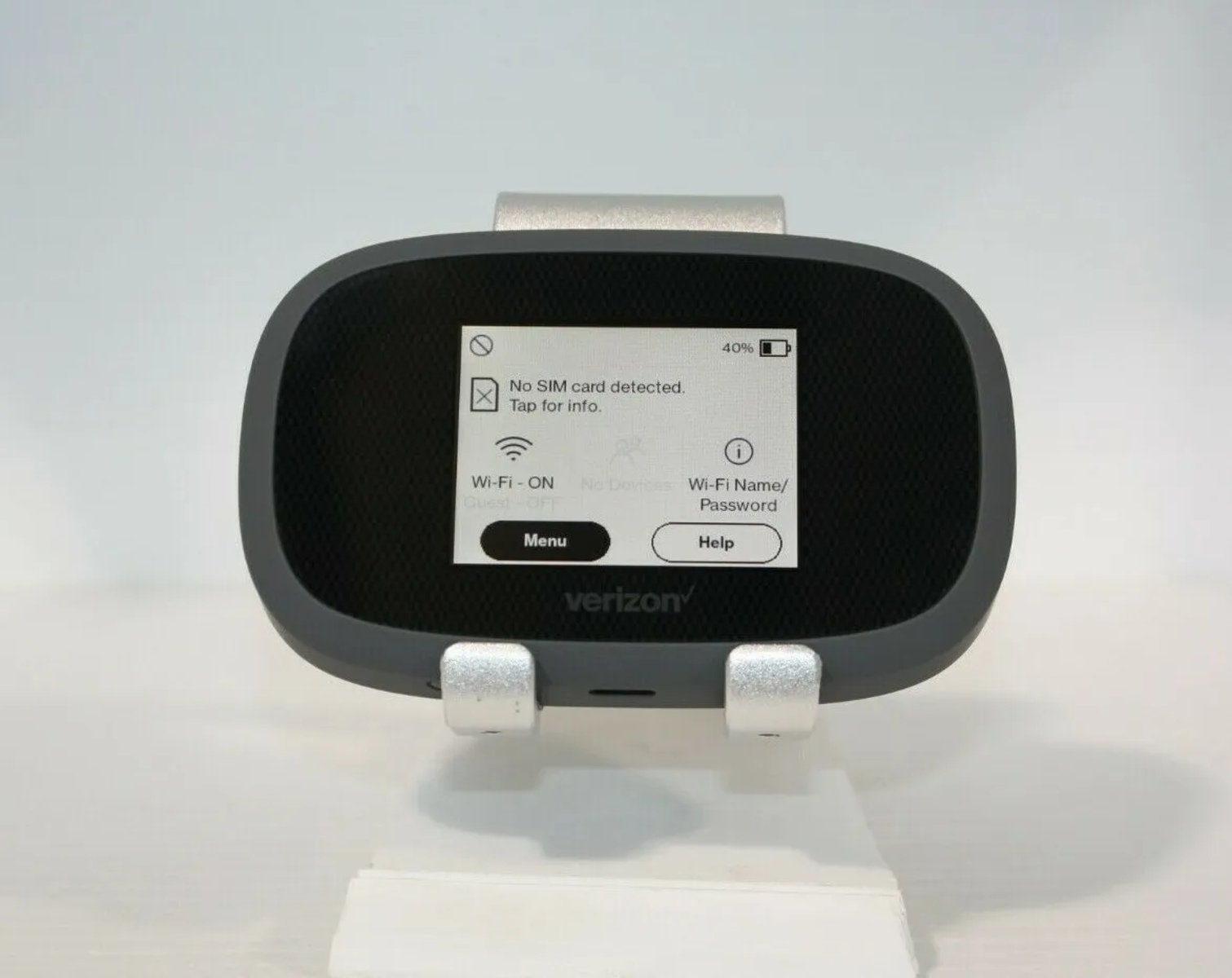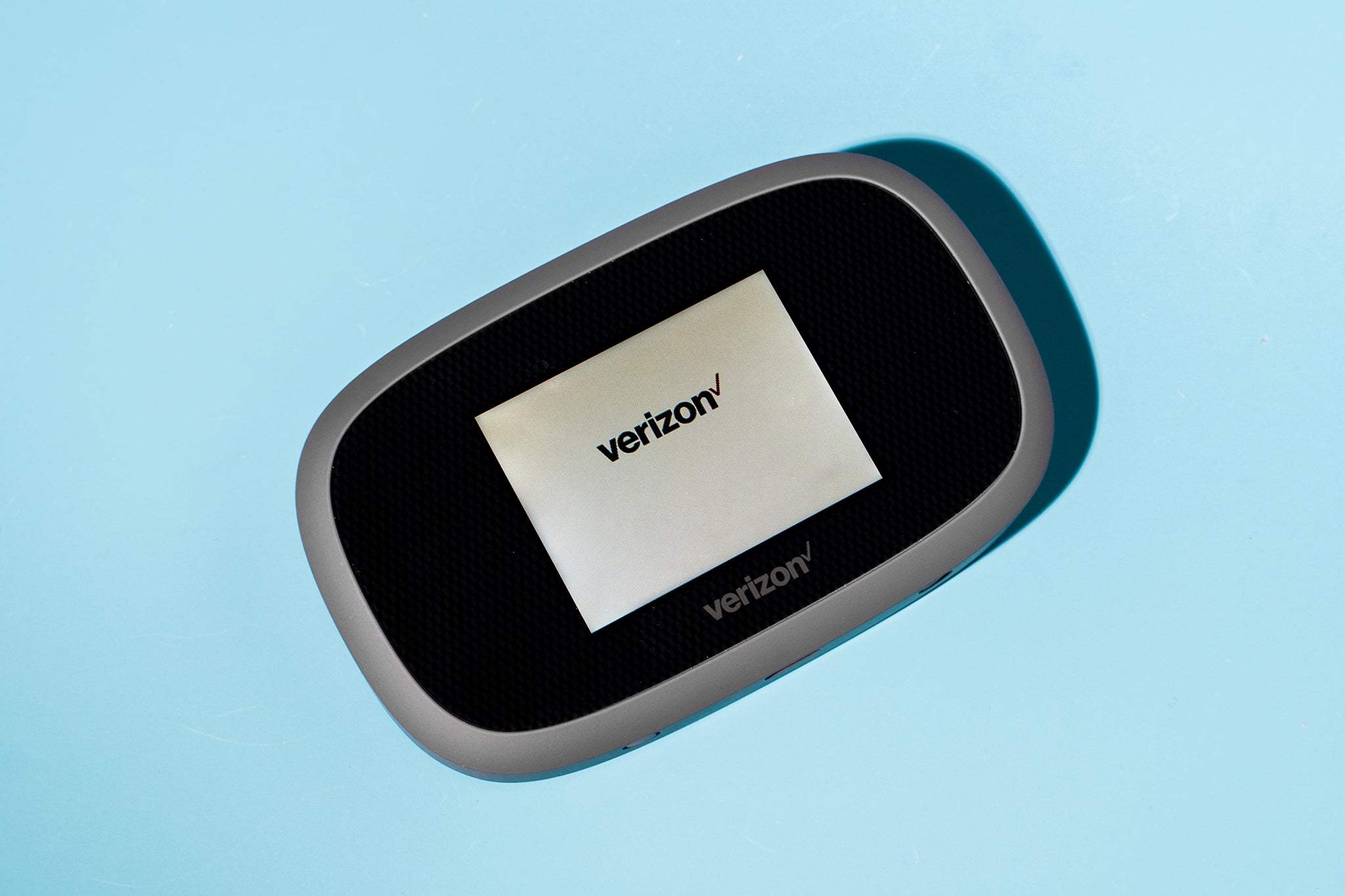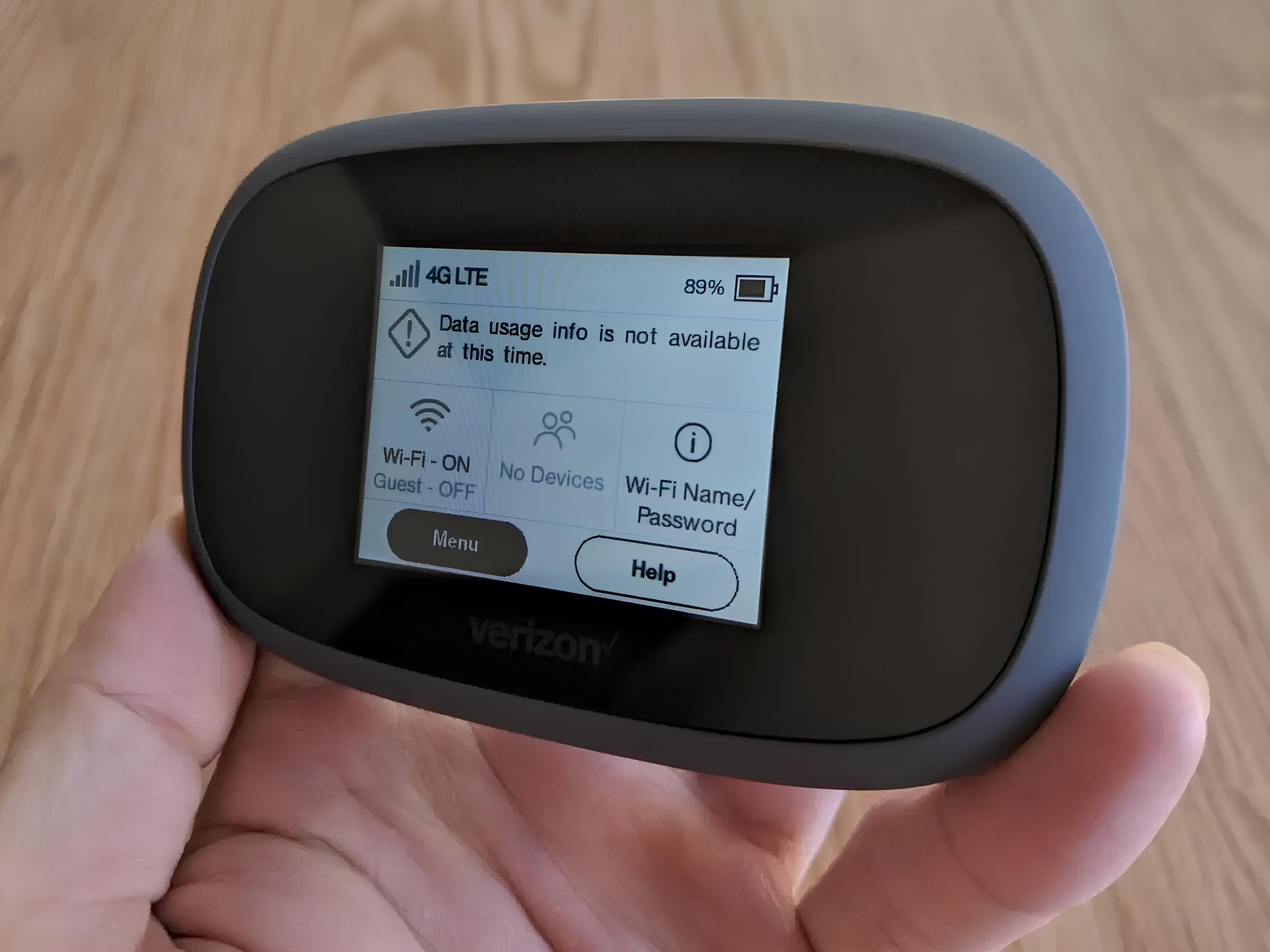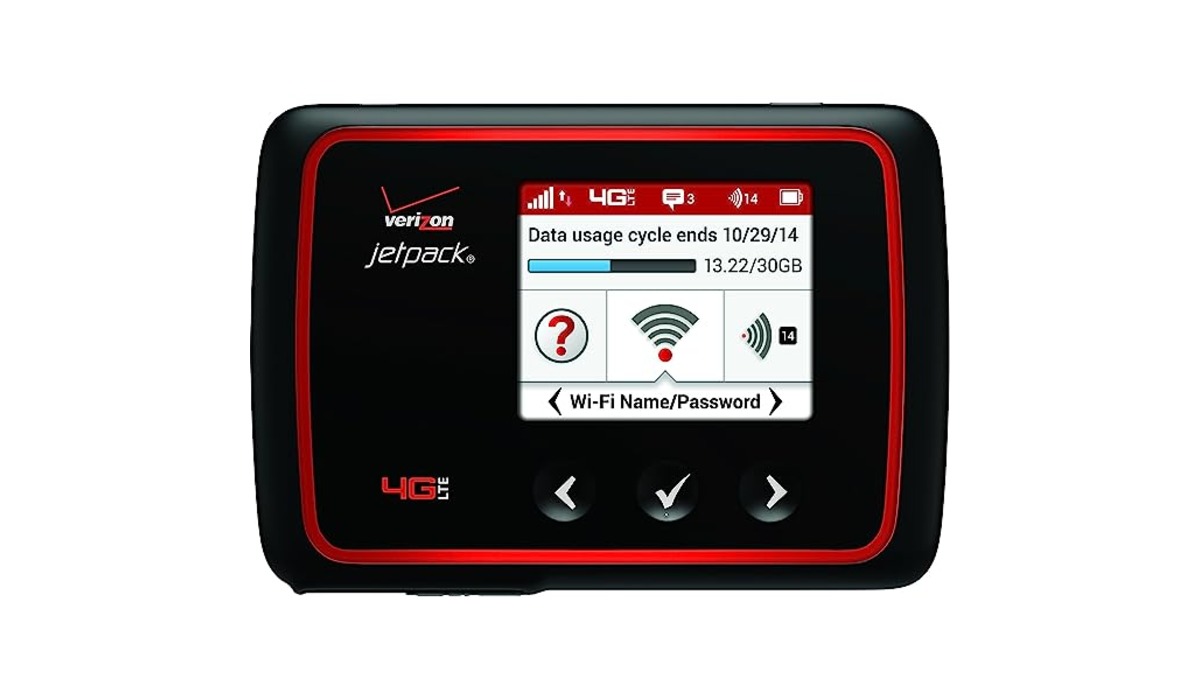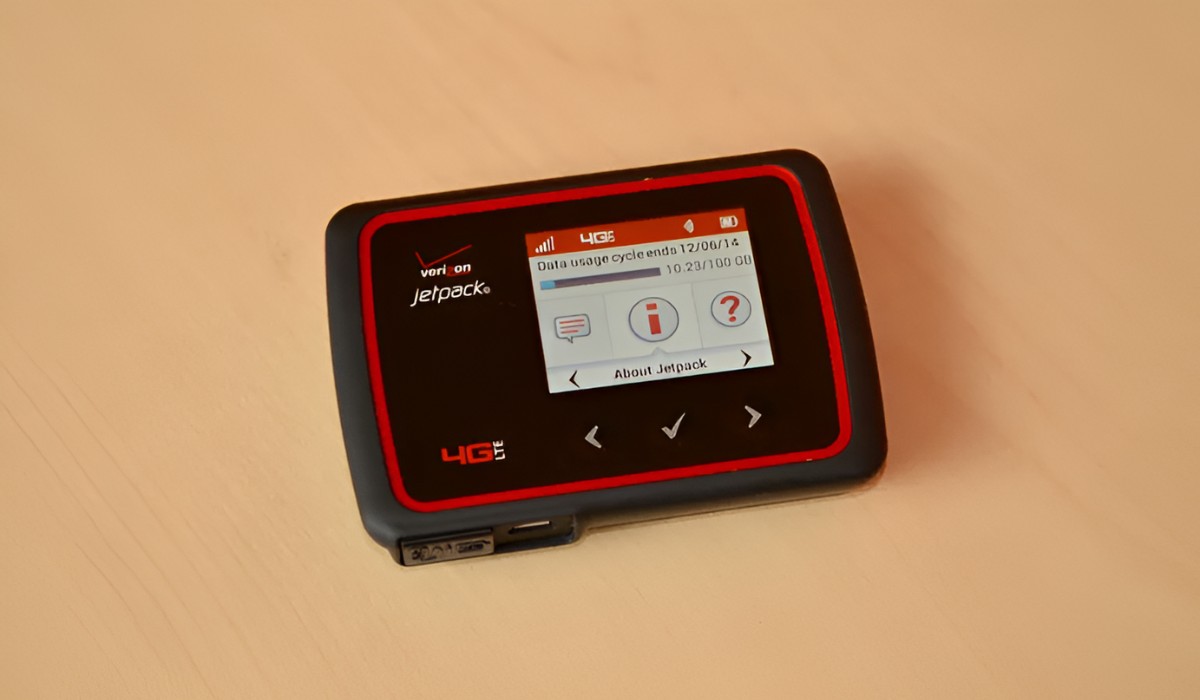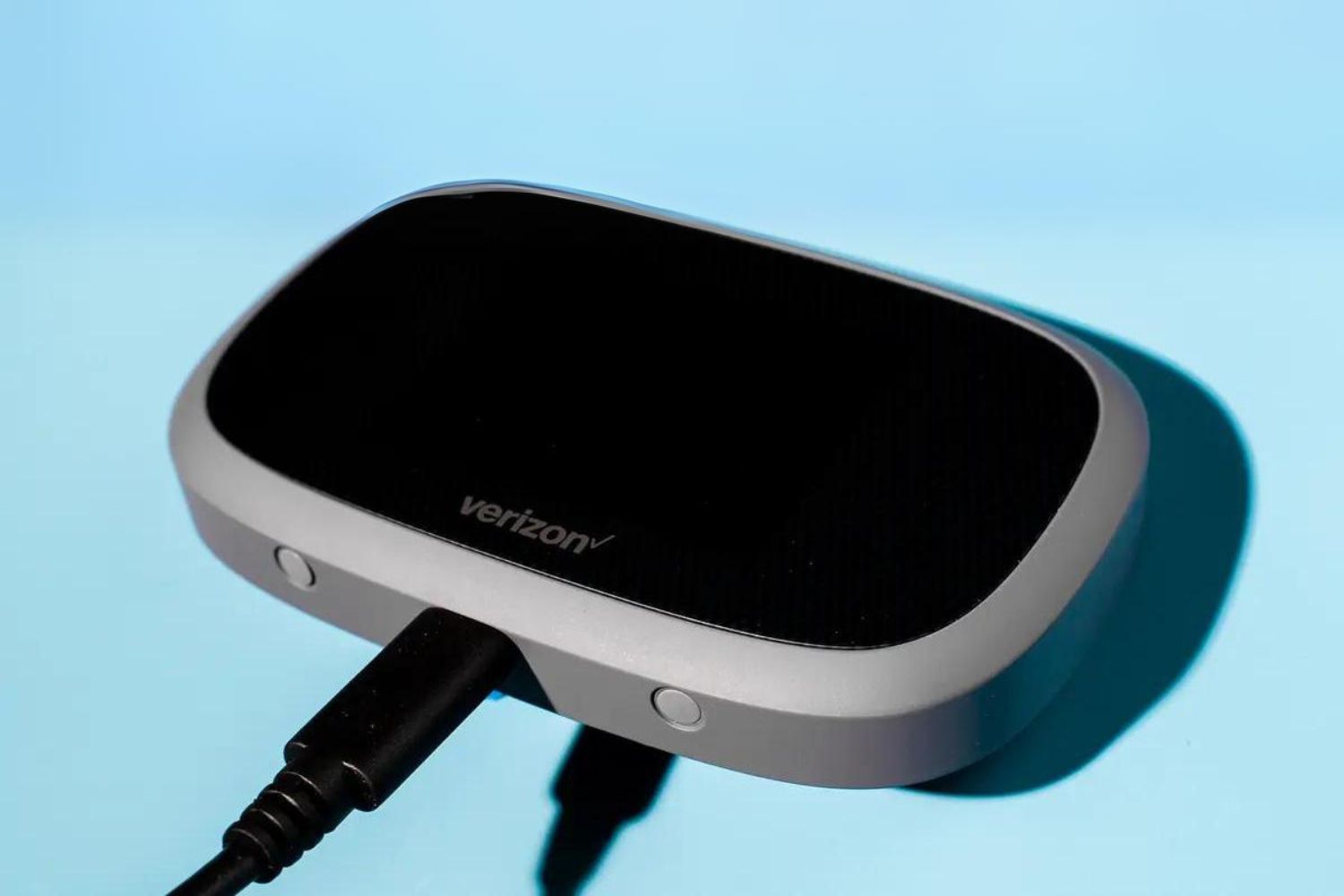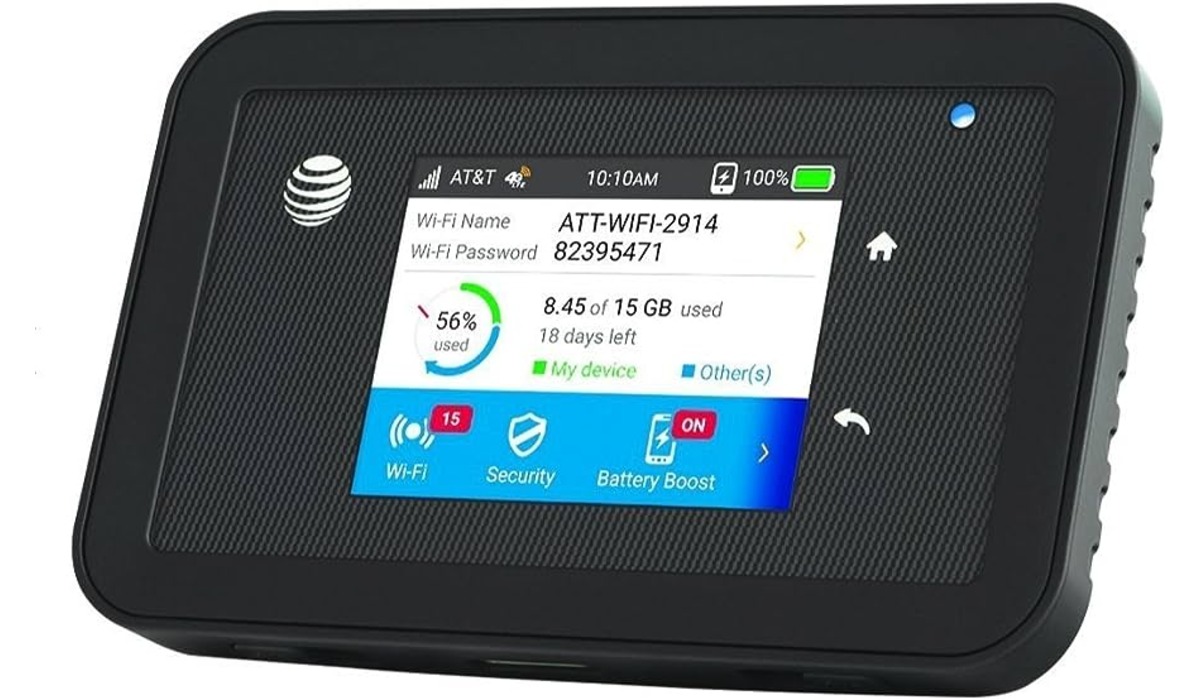Introduction
Setting up a Verizon hotspot is a convenient and efficient way to access the internet while on the go. Whether you're traveling, working remotely, or simply in a location without Wi-Fi, a Verizon hotspot provides a reliable connection for your devices. In this guide, we'll walk you through the quick and easy steps to set up your Verizon hotspot, allowing you to stay connected wherever you are.
A Verizon hotspot functions as a portable Wi-Fi network, enabling you to connect multiple devices, such as laptops, smartphones, and tablets, to the internet using Verizon's robust cellular network. This means you can enjoy seamless internet access without relying on public Wi-Fi networks or consuming your smartphone's data plan. With its simple setup process and widespread coverage, a Verizon hotspot is a versatile solution for staying connected in various scenarios.
Whether you're a frequent traveler, a remote worker, or someone who values the flexibility of a portable internet connection, a Verizon hotspot can be a valuable addition to your tech arsenal. By following the steps outlined in this guide, you'll be able to set up your Verizon hotspot in no time, ensuring that you're always connected and ready to tackle your online tasks.
Now, let's delve into the step-by-step process of setting up your Verizon hotspot, empowering you to harness the power of a reliable and portable internet connection.
Step 1: Gather Necessary Equipment
Before diving into the setup process, it's crucial to ensure that you have all the necessary equipment at your disposal. Gathering the required items beforehand will streamline the setup process and help you avoid any interruptions. Here's what you'll need to get started:
1. Verizon Hotspot Device:
The centerpiece of your setup is the Verizon hotspot device itself. This compact and portable gadget serves as your gateway to the Verizon cellular network, allowing you to create a Wi-Fi hotspot for your devices. Depending on your specific model, the hotspot device may come in the form of a sleek, pocket-sized unit with a built-in display for easy navigation.
2. Power Adapter and Cable:
To power up your Verizon hotspot device, you'll need a compatible power adapter and cable. These accessories typically come included with the hotspot device and are essential for keeping it charged and operational. Having a reliable power source ensures that your hotspot remains functional throughout your usage, providing uninterrupted internet access.
3. SIM Card:
In order to connect to Verizon's cellular network, you'll need a Verizon SIM card that's compatible with your hotspot device. The SIM card acts as the link between your device and the cellular network, enabling seamless data connectivity. If you're a new Verizon customer, the SIM card may be included in your hotspot package. For existing customers, you can use the SIM card from your Verizon smartphone or obtain a dedicated SIM card for your hotspot.
4. Device Documentation:
While not a physical item, having the device documentation on hand can be immensely helpful during the setup process. This includes the user manual or setup guide that accompanies your Verizon hotspot device. The documentation provides valuable insights into the device's features, setup instructions, and troubleshooting tips, empowering you to make the most of your hotspot.
By ensuring that you have all these essential components ready, you'll be well-prepared to embark on the seamless setup of your Verizon hotspot. With the necessary equipment in hand, you can proceed to the next steps with confidence, knowing that you have everything you need to establish a reliable and portable internet connection.
Step 2: Power On the Hotspot
Powering on your Verizon hotspot is the crucial first step towards establishing a reliable internet connection on the go. This process is straightforward and ensures that your hotspot device is ready to create a Wi-Fi network for your devices to connect to. Here's a detailed walkthrough of how to power on your Verizon hotspot:
-
Locate the Power Button:
The power button is typically located on the hotspot device's exterior. It may be a physical button or a touch-sensitive area, depending on the model. Look for the power symbol or indicator near the button to identify it easily. -
Press and Hold the Power Button:
To power on the hotspot, press and hold the power button for a few seconds. This action initiates the startup process, and you may see indicator lights or a display activating to indicate that the device is powering on. -
Wait for Initialization:
Once the power button has been pressed, the hotspot device will begin its initialization sequence. This may involve displaying the device's logo, status indicators, or a startup animation on the built-in display, if applicable. Allow the device a few moments to complete this process. -
Check for Power Indicators:
As the device powers on, observe the power indicators to ensure that the device is receiving power and initializing correctly. These indicators may include LED lights, display notifications, or on-screen prompts that signify the device's operational status. -
Connect Power Adapter if Needed:
If the hotspot device requires charging or if it's the first time you're powering it on, ensure that it's connected to the power adapter. This step is crucial for maintaining the device's battery life and ensuring uninterrupted usage. -
Accessing the Device Display (If Applicable):
Some Verizon hotspot models feature a built-in display that provides visual feedback during the startup process. If your device includes a display, pay attention to any on-screen instructions or status messages that may appear as the device powers on.
By following these steps, you can effectively power on your Verizon hotspot, setting the stage for seamless internet connectivity. Once the device has completed its startup sequence, it will be ready to create a Wi-Fi network, allowing you to connect your devices and enjoy reliable internet access wherever you are.
With your Verizon hotspot powered on and ready for action, you're now prepared to move on to the next steps, bringing you closer to harnessing the full potential of your portable internet solution.
Step 3: Connect to the Hotspot Network
Once your Verizon hotspot is powered on and ready, the next step is to connect your devices to the hotspot's network. This process allows your devices to access the internet through the Verizon cellular network, providing you with seamless connectivity on the go. Here's a detailed guide on how to connect your devices to the hotspot network:
-
Locate the Hotspot Network: On your device, navigate to the Wi-Fi settings and look for the list of available networks. Your Verizon hotspot's network name (SSID) should be visible in the list. The network name is typically labeled with a unique identifier, often including the term "Verizon" or the hotspot model name.
-
Select the Hotspot Network: Tap on the Verizon hotspot's network name to initiate the connection process. Depending on your device, you may be prompted to enter a password or passphrase to authenticate the connection. This security measure ensures that only authorized users can access the hotspot's network.
-
Enter the Network Password (If Required): If prompted, enter the network password provided with your Verizon hotspot device. The password is a security feature that safeguards your hotspot's network from unauthorized access. It's essential to enter the correct password to establish a secure and reliable connection to the hotspot.
-
Wait for Connection Confirmation: After entering the network password, your device will attempt to connect to the Verizon hotspot's network. Depending on your device's settings, you may see a confirmation message or an icon indicating that the connection is in progress. Once the connection is established, your device will be ready to access the internet through the hotspot.
-
Verify Connectivity: To ensure that your device is successfully connected to the Verizon hotspot, open a web browser or an internet-dependent app. Attempt to load a webpage or perform an online activity to verify that your device is receiving internet connectivity through the hotspot network.
By following these steps, you can seamlessly connect your devices to the Verizon hotspot's network, enabling you to enjoy reliable internet access on the go. Once your devices are connected, you can leverage the full capabilities of your Verizon hotspot, staying connected and productive wherever your ventures take you.
With your devices successfully connected to the hotspot network, you're now ready to proceed to the next steps, allowing you to further customize and optimize your Verizon hotspot setup for your specific needs.
Step 4: Access Hotspot Settings
Accessing the hotspot settings is a pivotal stage in the setup process as it allows you to customize and fine-tune various aspects of your Verizon hotspot to align with your specific preferences and requirements. By delving into the hotspot settings, you gain the ability to optimize security features, manage connected devices, monitor data usage, and explore additional functionalities offered by your hotspot device. Here's a detailed exploration of how to access and navigate the hotspot settings:
-
Accessing the Hotspot Interface: To begin, you'll need to access the hotspot interface, which is typically achieved by entering the device's IP address into a web browser on a connected device. This IP address, along with login credentials, is often provided in the device documentation. Once entered, you'll gain access to the hotspot's administrative interface, allowing you to configure settings and manage various aspects of the device.
-
Navigating the Settings Menu: Upon accessing the hotspot interface, you'll be presented with a settings menu that provides an array of configurable options. These options may include network settings, security settings, device management, and additional features specific to your hotspot model. Navigating through the settings menu enables you to customize the hotspot according to your preferences and operational needs.
-
Customizing Network Settings: Within the settings menu, you can fine-tune network-related configurations such as Wi-Fi network name (SSID), password, security protocols, and network mode. This level of customization allows you to create a secure and personalized Wi-Fi network for your connected devices, ensuring a seamless and protected internet experience.
-
Managing Connected Devices: Another essential aspect of the hotspot settings is the ability to manage connected devices. This may involve viewing a list of connected devices, assigning priority to specific devices, and controlling access permissions. By managing connected devices, you can optimize network performance and security while accommodating the connectivity needs of your devices.
-
Monitoring Data Usage and Statistics: Some hotspot settings interfaces provide detailed insights into data usage, network statistics, and historical usage patterns. This functionality empowers you to monitor data consumption, track network performance, and make informed decisions regarding your data usage and connectivity habits.
-
Exploring Additional Features: Depending on your hotspot model, the settings menu may offer access to additional features such as guest network creation, parental controls, firmware updates, and advanced network configurations. Exploring these features allows you to unlock the full potential of your Verizon hotspot, tailoring its capabilities to suit your specific use cases.
By accessing and navigating the hotspot settings, you gain the flexibility and control to tailor your Verizon hotspot to your unique requirements, ensuring that it operates in alignment with your connectivity needs and preferences. This level of customization and optimization sets the stage for a seamless and personalized internet experience, empowering you to make the most of your portable internet solution.
Step 5: Customize Hotspot Settings
Customizing the settings of your Verizon hotspot is a pivotal aspect of optimizing its functionality to suit your specific connectivity needs and preferences. By delving into the customizable features offered by your hotspot device, you can fine-tune various parameters, enhance security, and tailor the network environment to align with your usage scenarios. Here's an in-depth exploration of the customization options available within the hotspot settings:
Personalizing Network Name and Password
One of the primary customization options within the hotspot settings involves personalizing the network name (SSID) and password. By assigning a unique and memorable network name, you can easily identify your hotspot amidst other available networks. Additionally, configuring a strong and secure password ensures that your hotspot network remains protected from unauthorized access, safeguarding your data and ensuring a secure connection for your devices.
Security Protocols and Encryption
Within the hotspot settings, you have the ability to configure security protocols and encryption methods to fortify the integrity of your Wi-Fi network. Selecting robust encryption standards, such as WPA2-PSK (Wi-Fi Protected Access 2 – Pre-Shared Key), enhances the security of your hotspot network, preventing unauthorized intrusion and maintaining the confidentiality of your data transmissions.
Network Mode and Band Selection
Customizing the network mode and band selection allows you to optimize the performance and coverage of your hotspot. Depending on your device model, you may have the option to select the preferred network mode (e.g., 4G LTE, 5G Ultra Wideband) and band frequencies. This level of customization enables you to adapt the hotspot's connectivity parameters to best suit the prevailing network conditions and your specific usage requirements.
Guest Network Creation and Access Controls
Some Verizon hotspot devices offer the capability to create a guest network and implement access controls. This feature allows you to provide temporary network access to guests or visitors while maintaining separation from your primary network. By customizing guest network settings and access controls, you can extend hospitality without compromising the security and privacy of your primary network.
Parental Controls and Content Filtering
For users with family-oriented connectivity needs, certain hotspot models offer parental controls and content filtering functionalities. Customizing these settings empowers you to regulate internet access for specific devices, enforce content restrictions, and manage online activities, ensuring a safe and age-appropriate online experience for children and young users.
Firmware Updates and Advanced Configurations
Exploring the advanced customization options within the hotspot settings may unveil features such as firmware updates, advanced network configurations, and performance optimizations. Keeping the device firmware up to date and fine-tuning advanced configurations allows you to maximize the capabilities of your Verizon hotspot, ensuring that it remains current, efficient, and aligned with evolving connectivity standards.
By delving into the customizable settings of your Verizon hotspot, you gain the flexibility and control to tailor the device's functionality to your unique requirements. This level of customization empowers you to create a secure, efficient, and personalized internet environment, ensuring that your hotspot operates in harmony with your connectivity needs and usage preferences.
Step 6: Connect Devices to the Hotspot
Once your Verizon hotspot is up and running, the next crucial step is to connect your devices to the hotspot's network. This seamless process allows your devices to access the internet through the Verizon cellular network, providing you with reliable connectivity on the go.
To begin, locate the Wi-Fi settings on your devices and look for the list of available networks. You should see your Verizon hotspot's network name (SSID) displayed in the list. Select the hotspot's network name and initiate the connection process. Depending on your device, you may be prompted to enter a password or passphrase to authenticate the connection. This security measure ensures that only authorized users can access the hotspot's network.
If prompted, enter the network password provided with your Verizon hotspot device. This password serves as a critical security feature, safeguarding your hotspot's network from unauthorized access. Once the password is entered, your device will attempt to connect to the Verizon hotspot's network. Depending on your device's settings, you may see a confirmation message or an icon indicating that the connection is in progress.
After the connection is established, your device will be ready to access the internet through the hotspot. To verify connectivity, open a web browser or an internet-dependent app and attempt to load a webpage or perform an online activity. This confirmation step ensures that your device is successfully receiving internet connectivity through the hotspot network.
By following these steps, you can seamlessly connect your devices to the Verizon hotspot's network, enabling you to enjoy reliable internet access on the go. Once your devices are connected, you can leverage the full capabilities of your Verizon hotspot, staying connected and productive wherever your ventures take you.
Conclusion
In conclusion, setting up your Verizon hotspot is a straightforward and empowering process that equips you with a reliable and portable internet solution. By following the quick and easy steps outlined in this guide, you've embarked on a journey to harness the full potential of your Verizon hotspot, ensuring that you stay connected and productive wherever you go.
The initial step of gathering the necessary equipment ensures that you're well-prepared to initiate the setup process without any interruptions. With the hotspot device powered on, you've unlocked the gateway to seamless internet connectivity, laying the foundation for a robust Wi-Fi network that can accommodate your devices with ease.
Connecting your devices to the hotspot network further solidifies the bridge between your gadgets and the Verizon cellular network, establishing a secure and reliable internet connection. This step ensures that you can seamlessly access online resources, communicate, and engage in various activities without being tethered to traditional Wi-Fi networks or limited by cellular data constraints.
Accessing and customizing the hotspot settings provides you with a tailored internet environment, allowing you to optimize security features, manage connected devices, monitor data usage, and explore additional functionalities specific to your hotspot model. This level of customization empowers you to create a personalized internet experience that aligns with your unique connectivity needs and usage scenarios.
By delving into the customizable features offered by your Verizon hotspot, you can fine-tune various parameters, enhance security, and tailor the network environment to suit your specific requirements. This level of customization ensures that your hotspot operates in harmony with your connectivity needs, providing a secure, efficient, and personalized internet environment.
Finally, connecting your devices to the hotspot network cements the seamless integration of your gadgets with the Verizon cellular network, ensuring that you can access the internet with ease and reliability. This step marks the culmination of your setup journey, empowering you to leverage the full capabilities of your Verizon hotspot and stay connected wherever your ventures take you.
In essence, the process of setting up your Verizon hotspot not only provides you with a reliable internet solution but also offers the freedom and flexibility to embrace connectivity on your terms. Whether you're a frequent traveler, a remote worker, or someone who values the convenience of portable internet, your Verizon hotspot stands as a reliable companion, ensuring that you're always connected and ready to navigate the digital landscape with confidence.







